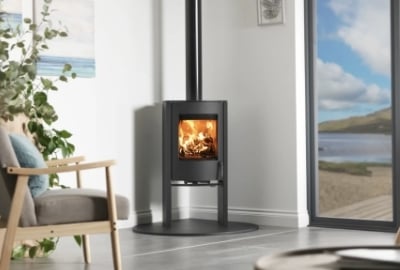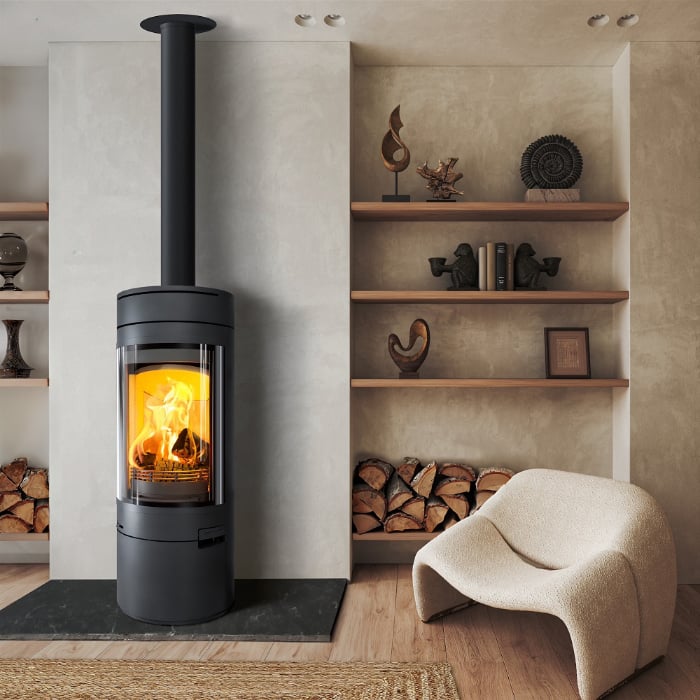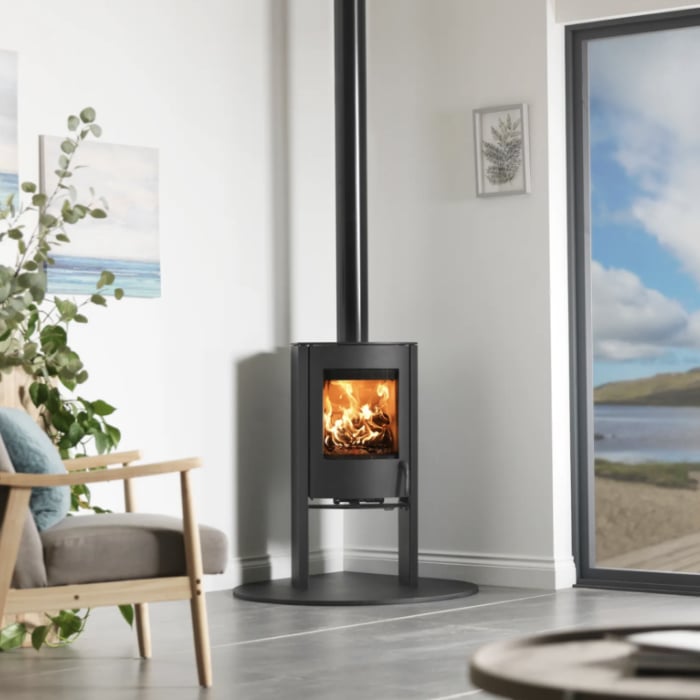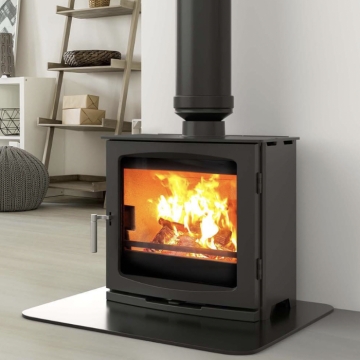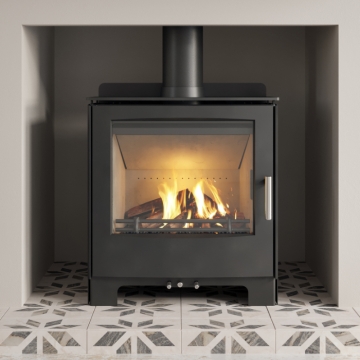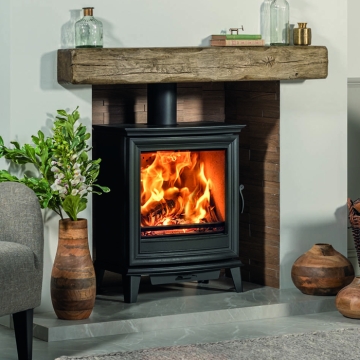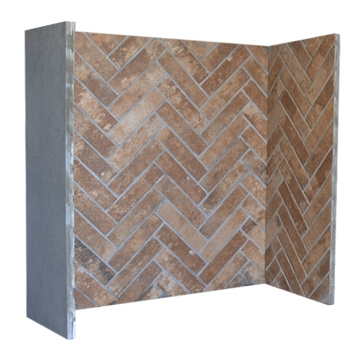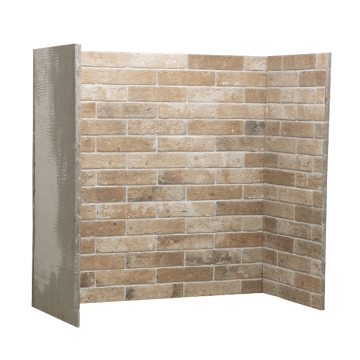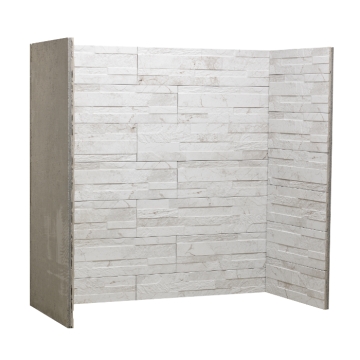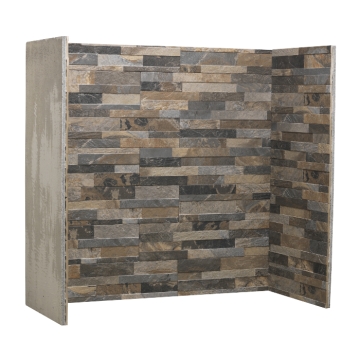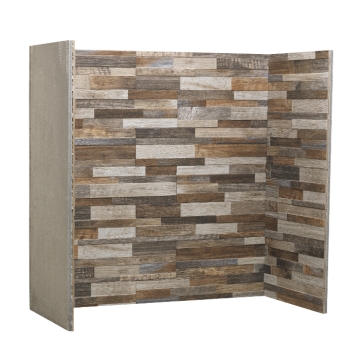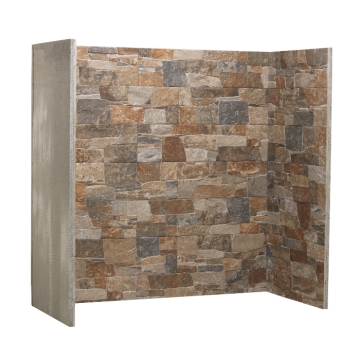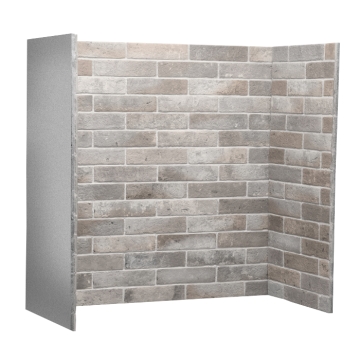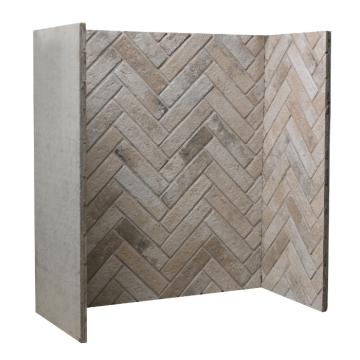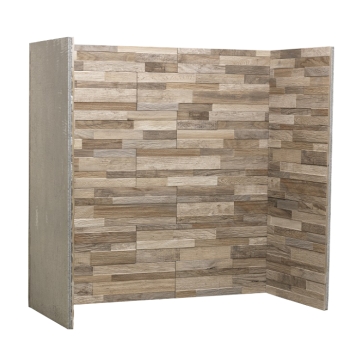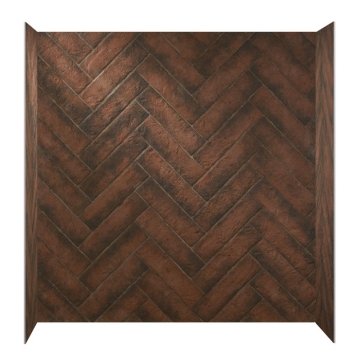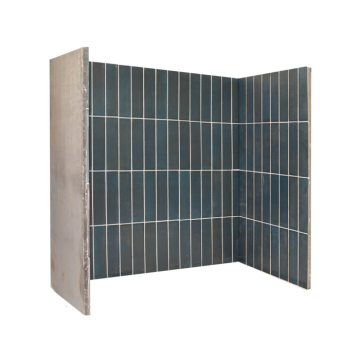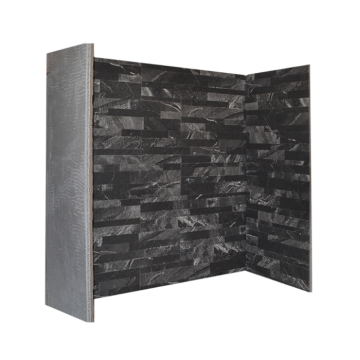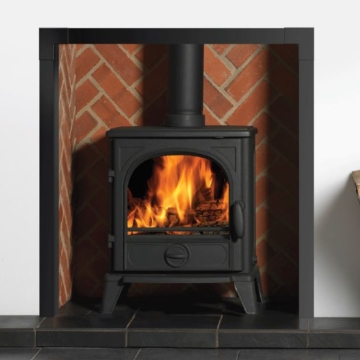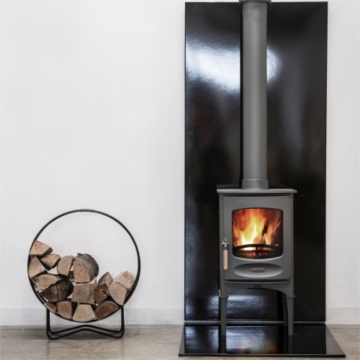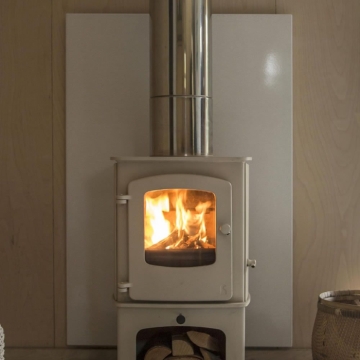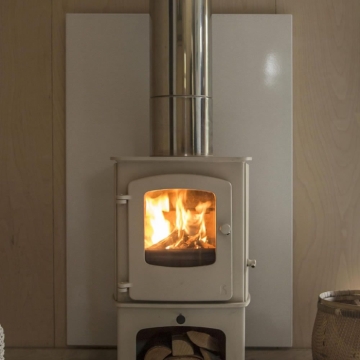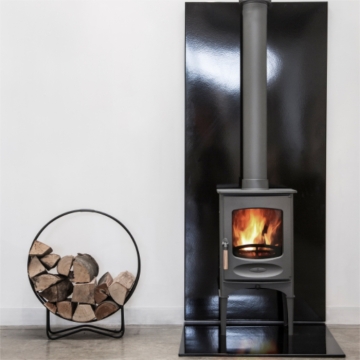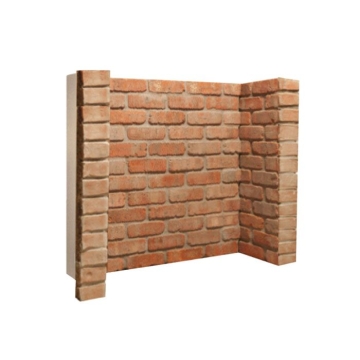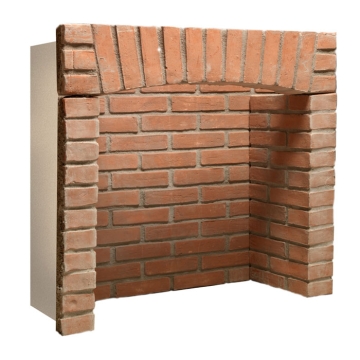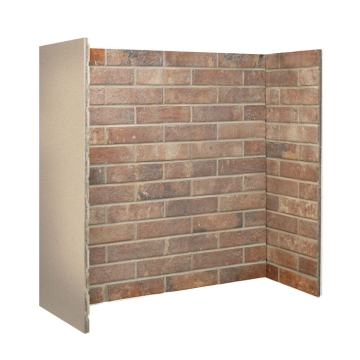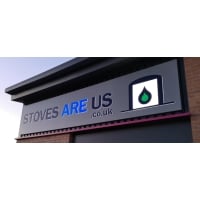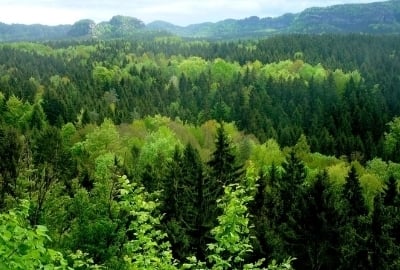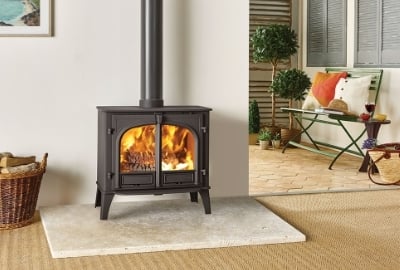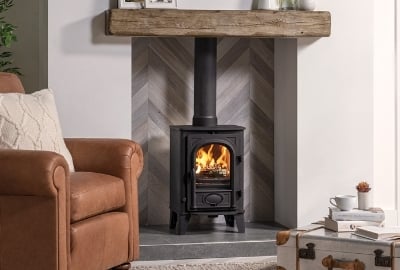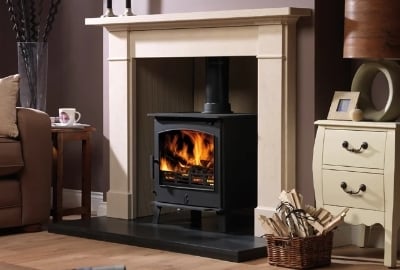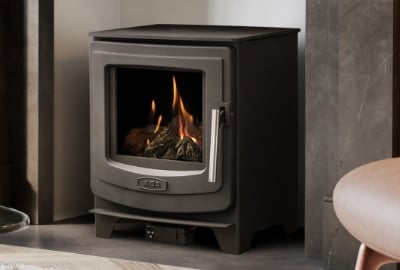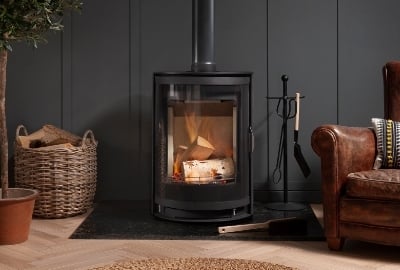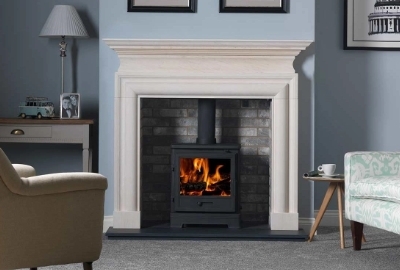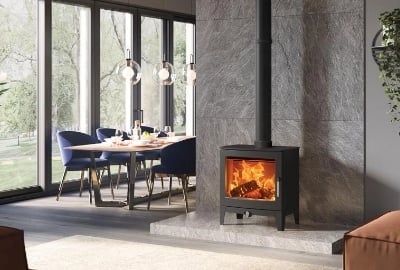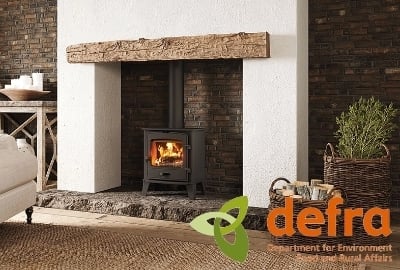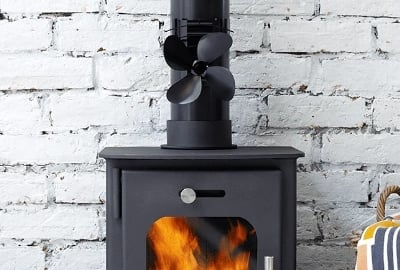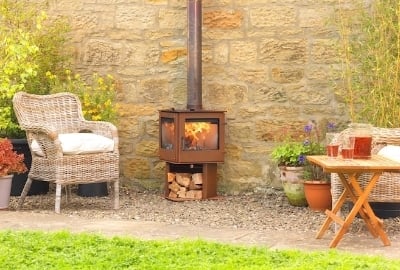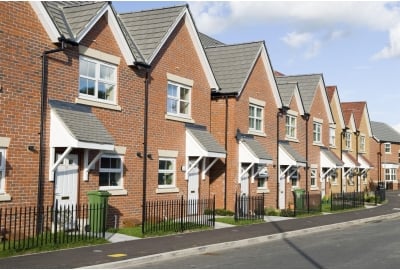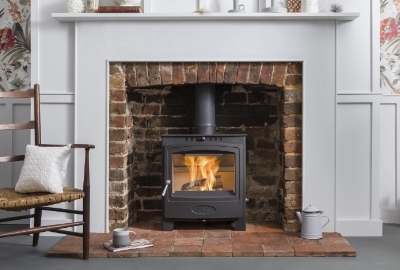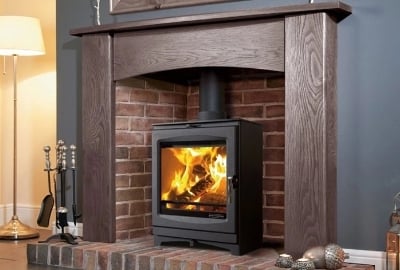When buying a wood burning stove it is important that you adhere to the manufacturer's guidelines and/or Building Regulations when it comes to the clearance required around the wood burner. The distance to combustible materials refers to the minimum clearance or air gap that must be maintained between a heat-producing appliance (like a stove) and any materials that could catch fire. In this edit, we’ll cover everything you need to know about the clearances you should leave around your stove and we’ll discuss heat insulation tips and why it is important to stick to these rules.
Contents
What is a combustible material?
How much space to leave around a wood burner?
Log burners that offer reduced clearance to combustibles
Tips for installing stoves in small spaces
What is a combustible material?
These materials, referred to as combustibles, include things like flooring and plasterboard and also fabrics like curtains, rugs, or furniture. The distance to combustibles that is specified by the manufacturer of the stove is crucial for preventing fires. If a gas stove or log burner is too close to a combustible material, the heat transfer can cause that material to ignite, leading to a dangerous fire.
This distance to combustibles is determined by the manufacturer of the stove, they test their products under specific conditions to determine the safe distances you need to leave as an air gap around the appliance. These tests account for factors like heat output, ventilation and the design of the stove which includes the construction and fuel used within the stove which can influence how much heat is radiated toward nearby surfaces.
How much space to leave around a wood burner?
For non-combustible materials, the typical minimum distance or clearance required from the front and rear of the stove’s external surface to surrounding walls is 150mm. This clearance requirement is for both freestanding stoves and wood burners installed within a recess. A hearth is also an important requirement for your installation and must extend 300mm to the front and for freestanding installations, the hearth size must be at least 840mm x 840mm, irrespective of the stove dimensions. A hearth protects your floor from the heat of your stove and any burning material that may fall out of the stove when you light the fire or during the refuelling process. The distances required from the stove's external surface to combustible maters can depend on the heat output of the stove and can range between 300-600mm or more. There is no set minimum distance to combustible materials but the manufacturer of the stove will list their recommendation with the user manual or guide.
For a freestanding stove that isn’t enclosed within a pre-existing chimney or fireplace opening you’ll also need to consider clearance around the exposed flue pipe. You’ll need to meet minimum requirements for protecting the surrounding surfaces from the heat that radiates from either the single-skin stove pipe or your double-insulated twin wall system. Single skin flues have no insulating properties so Building Regulations state the clearance to combustibles must be at least three times the internal diameter of the flue pipe. Inside a fireplace opening or where only non-combustible materials are present the distance can be reduced to only one and a half times the internal diameter of the flue pipe.
A twin-wall insulated flue pipe is fitted with a layer of insulation so the distance requirements to combustible materials are much smaller. Our twin wall dual-pipe is separated by a layer of high-grade insulation, which ensures that the exterior wall does not get hot enough to cause damage to the surrounding structure. The clearance requirement for our twin wall flues to materials like timber or plasterboard is only 60mm so you can easily navigate loft spaces and these flues can pass through ceilings with the right heat shields in place.
Log burners that offer reduced clearance to combustibles
Before choosing a stove for installation, it is crucial to consider the required clearance to combustible materials. Some stoves are specifically designed with reduced clearances, making them safer for installations in smaller or more confined spaces. Here we’ve put together log burners that have been rigorously tested and offer low distance requirements to combustible materials. These low clearance stoves can put your mind at ease and your home safe, especially when looking to install a wood burner in a tight space.
Tips for installing stoves in small spaces
If you’re having a wood burning or multi-fuel stove installed, you might consider some of the following recommendations especially if you have a small space or if you’re conscious about heat transfer. These tips could help you fit a wood burner into a space that you thought might not be possible.
- Log burners with heat shields - Stoves with integrated heat shields often have lower clearance requirements. These shields help to deflect the heat forwards into the room and away from walls and other nearby combustible materials, look out for stoves that are labelled as 'close clearance’ or ‘low clearance’ stoves.
- Small wood burners - Small wood stoves that have 5kW heat output or under often have lower clearance requirements due to their size and smaller heat output. These log burners can be ideal for cabins, smaller rooms or even on boats.
- Electric stoves - Electric wood burners have much lower clearance requirements than wood stoves. They can be installed closer to walls and other combustible materials because the fan heaters are located at the front of the appliance so the heat projects forward into the room.
- Corner stoves or corner log burner installations often provide more flexibility with clearance. Some log burners are specifically designed for corner placement and have reduced clearance requirements due to their design.
- Non-combustible fixtures and fittings - Consider using non-combustible installation accessories like geocast beams or tile/stone fireplace chambers. These products can be fitted much closer to your appliance than a wooden beam for example. Before installation, it is wise to consult with a professional installer to ensure compliance with local building regulations and to get specific recommendations for your space.

